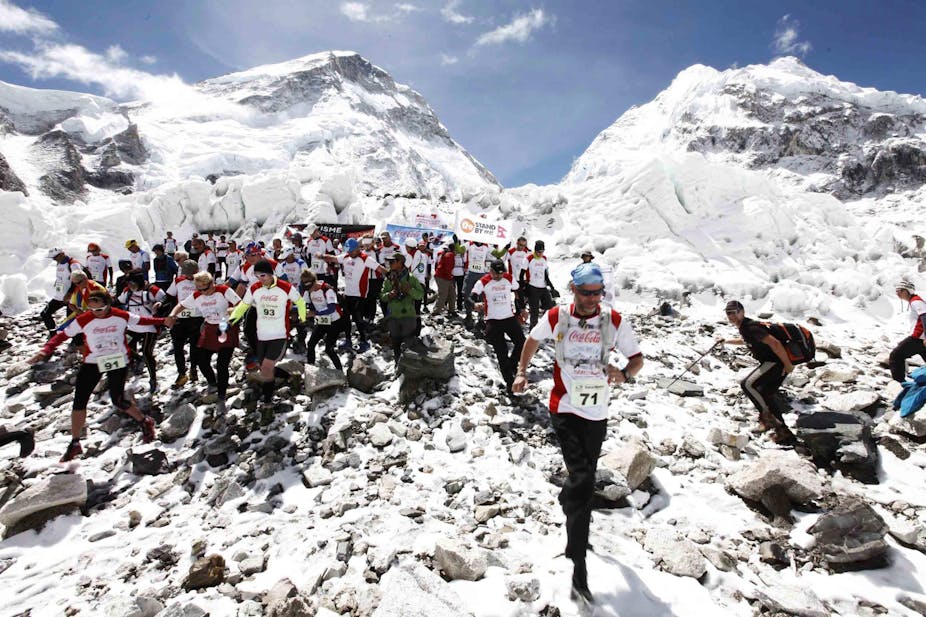On May 15, 2006, a mere 300 metres from the summit of Everest, [David Sharp sat just off the climbing route dying](http://en.wikipedia.org/wiki/David_Sharp_(mountaineer), starved of oxygen, slowly drowning as his lungs filled with his own fluids while his arms and legs gradually turned to ice.
While horrific, this was not an uncommon way to die in the Everest “death zone”. What disturbed the world was that approximately 40 climbers ignored this man’s plight as they made their way to the summit. Strong criticism of the unwillingness of climbers in commercial groups to help other climbers in life-threatening situations first emerged in the 1990s, led by Sir Edmund Hillary. It then stepped up in response to Sharp’s lonely death.
The sheer number of books and media reports on the subject would suggest that something is very wrong with the attitudes of modern climbers, and that commercialisation of the Everest climb is to blame.
Fellow researcher Benno Torgler and I were spurred on by Hillary’s remark that in his day his expedition would never have “left a man to die under a rock” and we set out to investigate if commercialisation has had a significant effect on pre-existing behaviour of Himalayan expeditions, famously referred to by Hillary as the “brotherhood of the rope”.
While scientific knowledge on how humans actually behave in extreme situations is limited, most of us believe we would not let someone die in pursuit of personal glory. But has the brotherhood of the rope been replaced with what mountaineer Jon Krakauer has described as “athletically and aesthetically unworthy individuals who are profaning and debasing the sacred peaks”?
While the pre-commercialisation period was characterised by strong and repeated cooperative interactions, commercial clients, who are less trained and unlikely to return once having successfully “summit-ed”, pay around US$50,000 to seasoned climbers to take them to the top.

As researchers with the Queensland Behavioural Economics (QuBE) Group in Australia, we analysed more than 60 years of Himalayan climbing data covering more than 6,300 expeditions, 285 peaks and more than 47,000 expedition members.
A simple analysis showed that after a death on commercial expeditions, its members went on to record successful climbs in 80.6% of cases, but only 37.8% of non-commercial expeditions carried on after a death. A deeper analysis, which controlled for differences between commercial and non-commercial groups such as group size, duration of the expedition, number of hired people and supporting material (rope and the use of oxygen), also reported a similar picture.
A death in a non-commercial expedition has a highly significant negative impact on the probability of success (24.3%), indicating a willingness to stop or abandon expeditions. However, this result was not found in commercial expeditions, where the death of an expedition member had no statistically significant impact on success.
This behavioural change among traditional climbers could indicate commercialisation has removed the incentive to cooperate in high risk environments where pro-social and helping behaviours can be vital factors in lowering risk to climbers and increased survival rates.
The results also suggest the remaining pro-social behaviour observed in recent times may be strongly driven by the attitudes and behaviour of the Sherpa.
It is worth recalling the humility of Sherpa Tenzing Norgay that after the first successful summit of Mount Everest 60 years ago (May 29, 1953) when he replied to a journalist who asked how it felt to be a great man: “it is Everest that makes men great”.
Can the same still be said about the commercial client buying their way to the summit?

